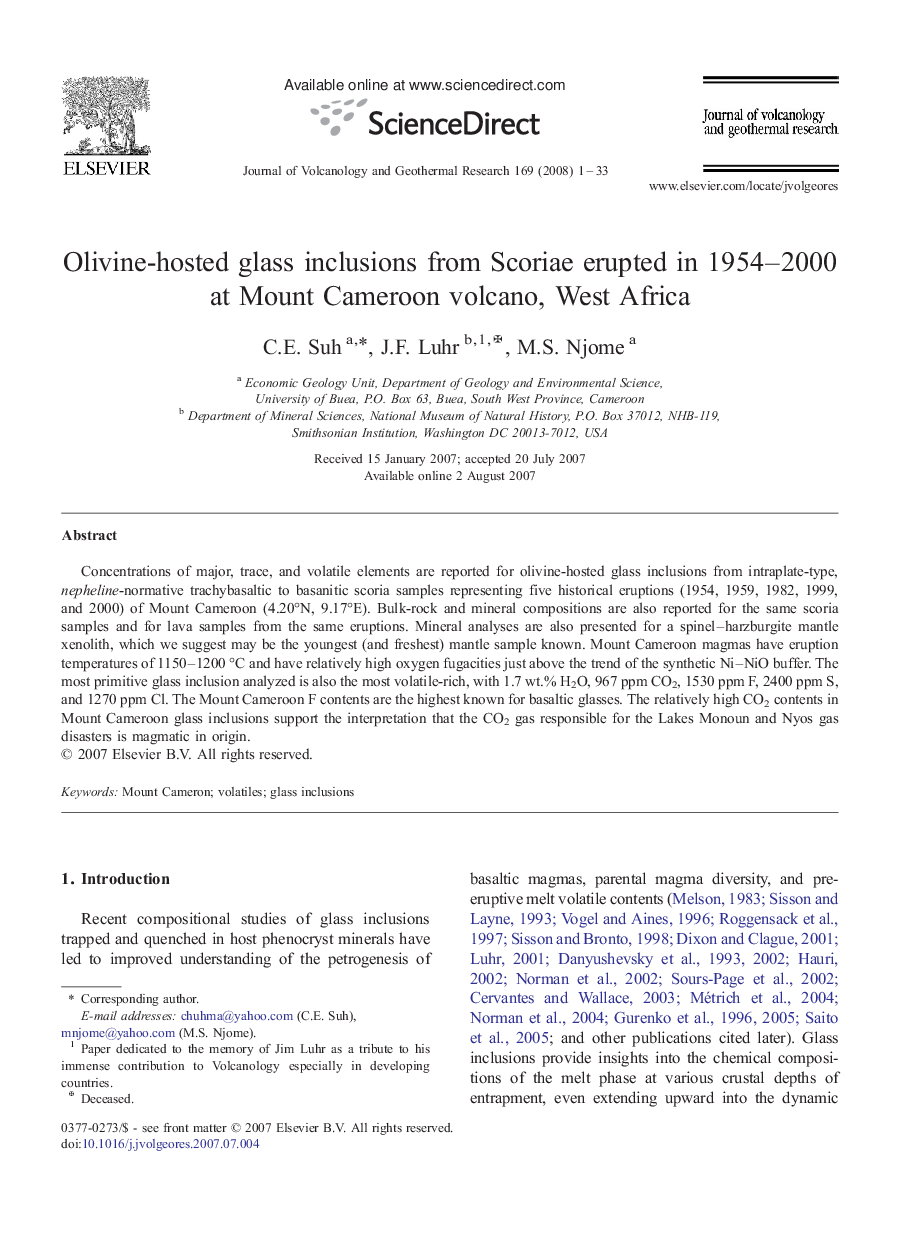| Article ID | Journal | Published Year | Pages | File Type |
|---|---|---|---|---|
| 4714917 | Journal of Volcanology and Geothermal Research | 2008 | 33 Pages |
Concentrations of major, trace, and volatile elements are reported for olivine-hosted glass inclusions from intraplate-type, nepheline-normative trachybasaltic to basanitic scoria samples representing five historical eruptions (1954, 1959, 1982, 1999, and 2000) of Mount Cameroon (4.20°N, 9.17°E). Bulk-rock and mineral compositions are also reported for the same scoria samples and for lava samples from the same eruptions. Mineral analyses are also presented for a spinel–harzburgite mantle xenolith, which we suggest may be the youngest (and freshest) mantle sample known. Mount Cameroon magmas have eruption temperatures of 1150–1200 °C and have relatively high oxygen fugacities just above the trend of the synthetic Ni–NiO buffer. The most primitive glass inclusion analyzed is also the most volatile-rich, with 1.7 wt.% H2O, 967 ppm CO2, 1530 ppm F, 2400 ppm S, and 1270 ppm Cl. The Mount Cameroon F contents are the highest known for basaltic glasses. The relatively high CO2 contents in Mount Cameroon glass inclusions support the interpretation that the CO2 gas responsible for the Lakes Monoun and Nyos gas disasters is magmatic in origin.
